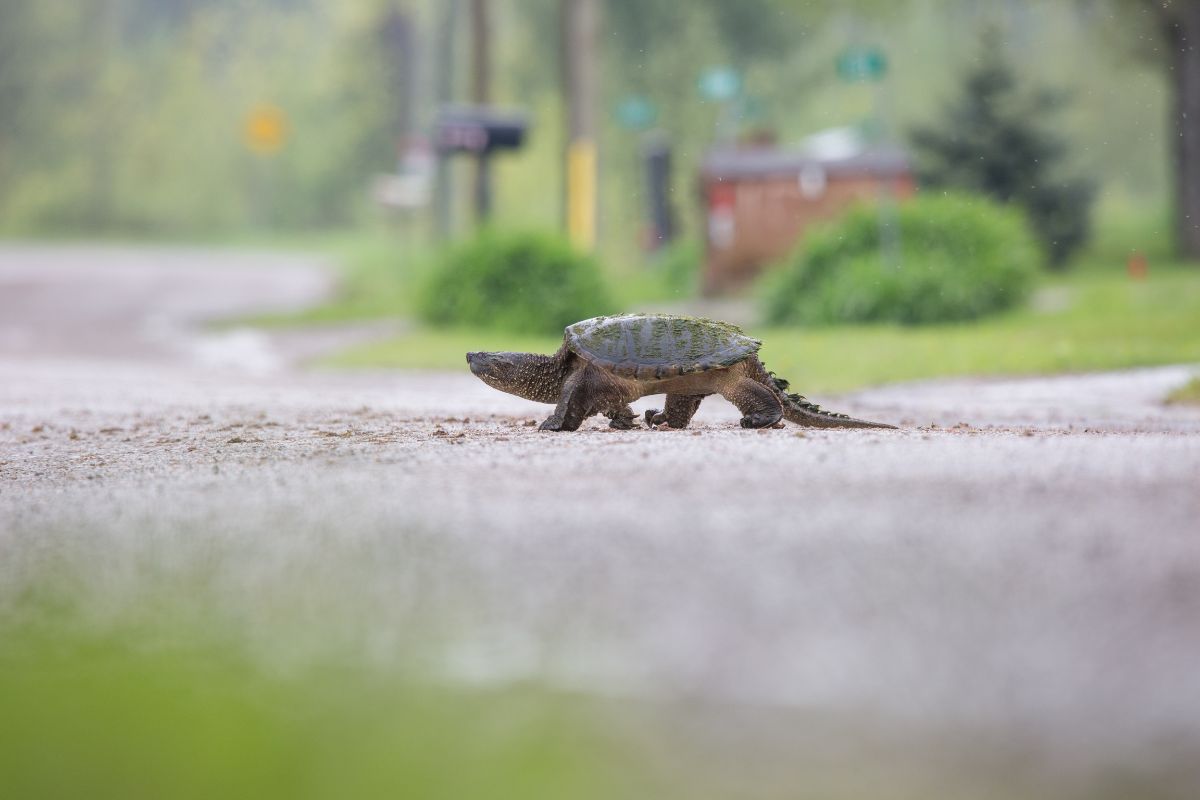In an effort to highlight the work you support, The Conservancy now has a monthly column in Orillia Matters. This was originally published on August 5th.

I’m speeding along Highway 12 when I see a mother duck with a line of ducklings trying to cross ahead of me. There are six cars behind and I’m doing 80 km/hr.
Okay, fine 90.
There’s no way I can stop in time.
This is by The Wye Marsh outside of Midland where the highway goes over the Tay Trail. There’s a safer place for Mama Duck to cross right underneath her – a bike path that goes to the next wetland. But animals don’t know this. This duck, like many turtles, snakes and frogs before her, is trying to cross at the road, because the open air, speeding cars and all, is more familiar to her than the dark, covered bike path below.
This morning I’m on my way to work at The Couchiching Conservancy – thirty minutes south east of Midland. There, my colleague Alysha is coordinating a project to combat this exact problem.
For years The Conservancy’s community science volunteers have been documenting wildlife mortality, ahem, roadkill, on the side of busy roads. One of the most dangerous to turtles is Monck Road in Ramara.
Monck Road splits two wetlands protected by The Couchiching Conservancy. The roadside gravel is perfect for turtles to lay eggs. The hatchlings emerge, immediately try to cross the road and are killed.
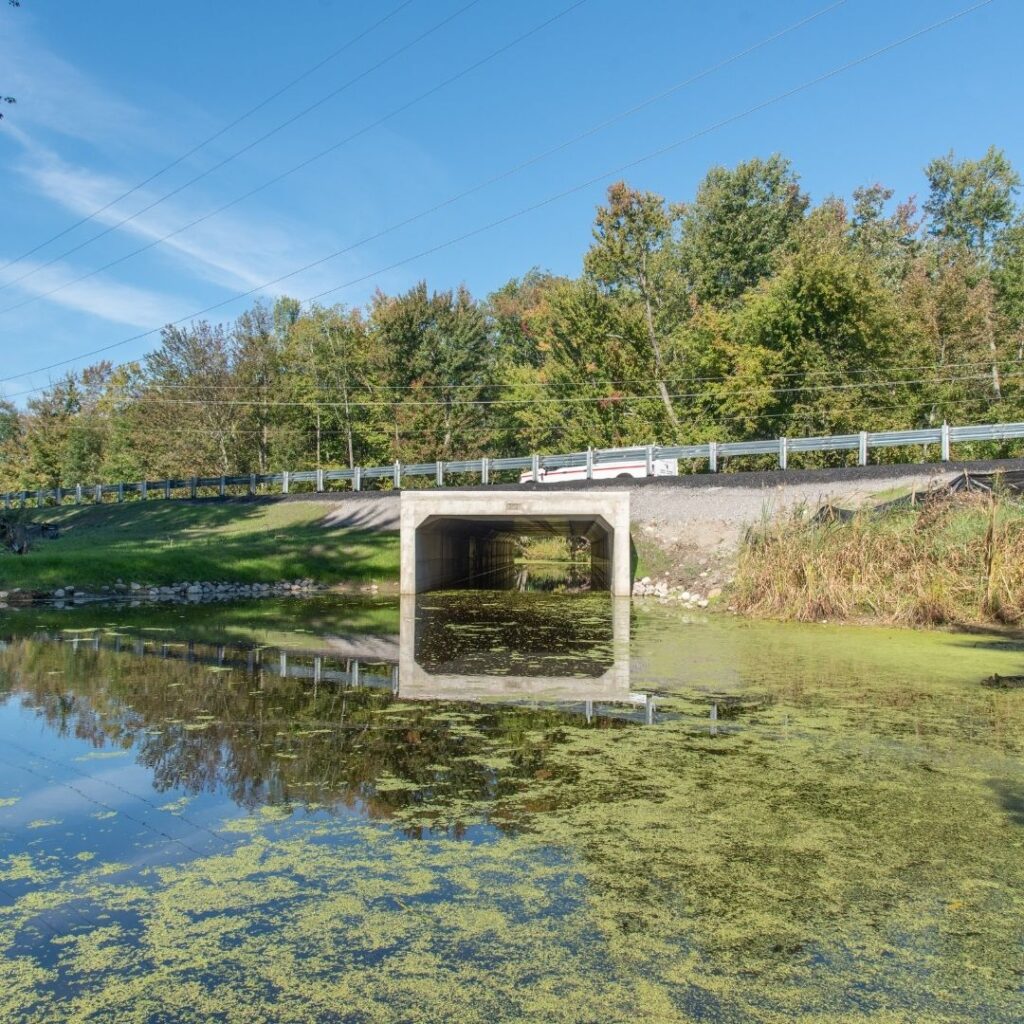
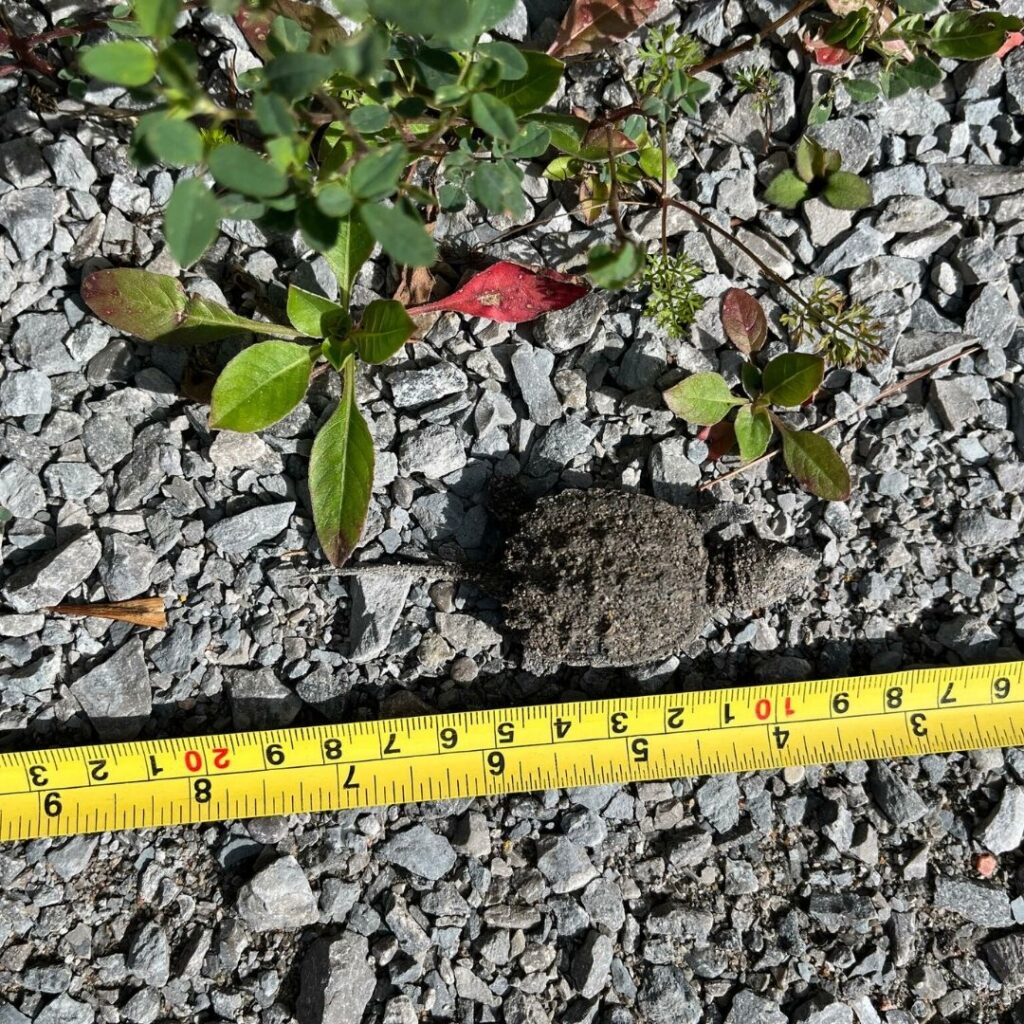
Snapping turtles don’t reach sexual maturity, and hence can’t reproduce, until they’re 15 – 20 years old. The loss of one turtle of reproductive age is a large dent in the population. Snapping turtles, as well as Ontario’s seven other turtles, are all on the list of threatened species.
Since this is a high mortality spot for turtles, Alysha has been constructing what we call an Eco Passage – essentially a safe way for animals to cross – this summer. She is in the digging stage.
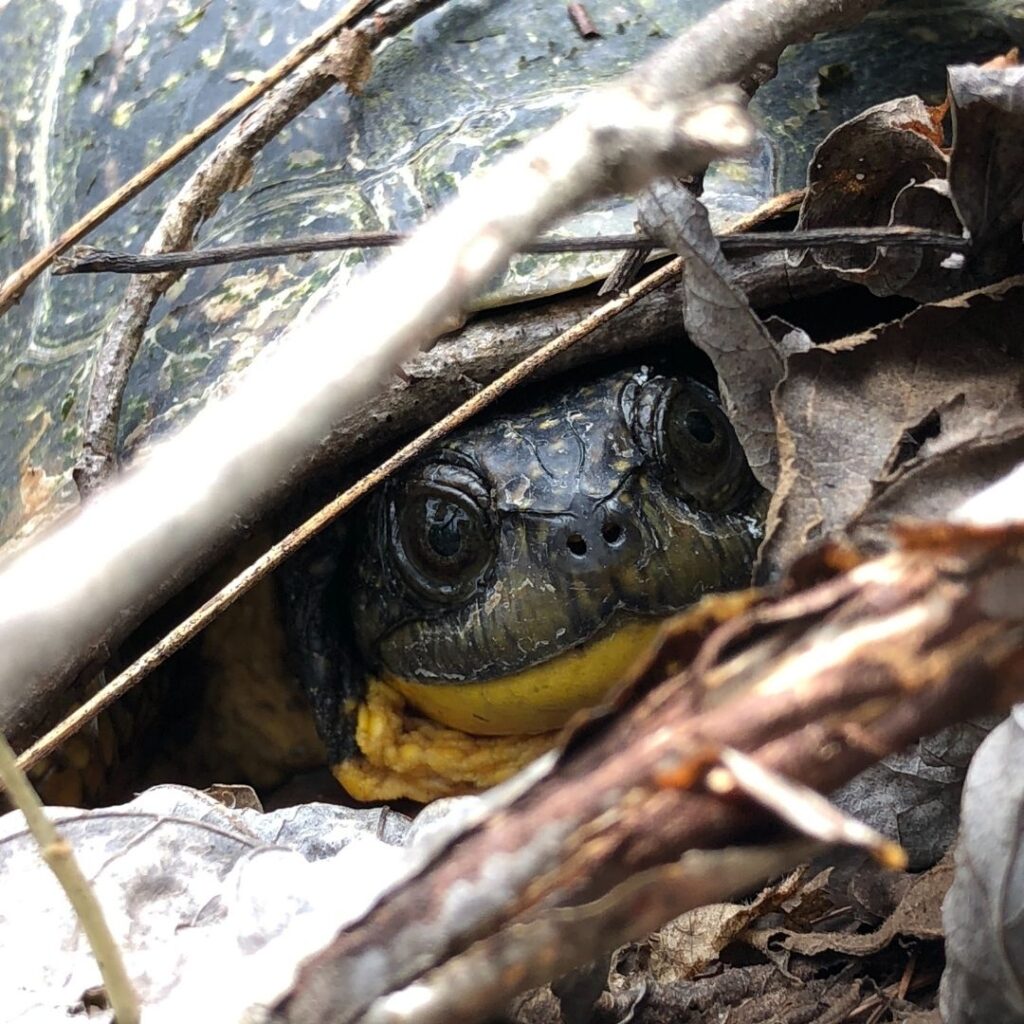
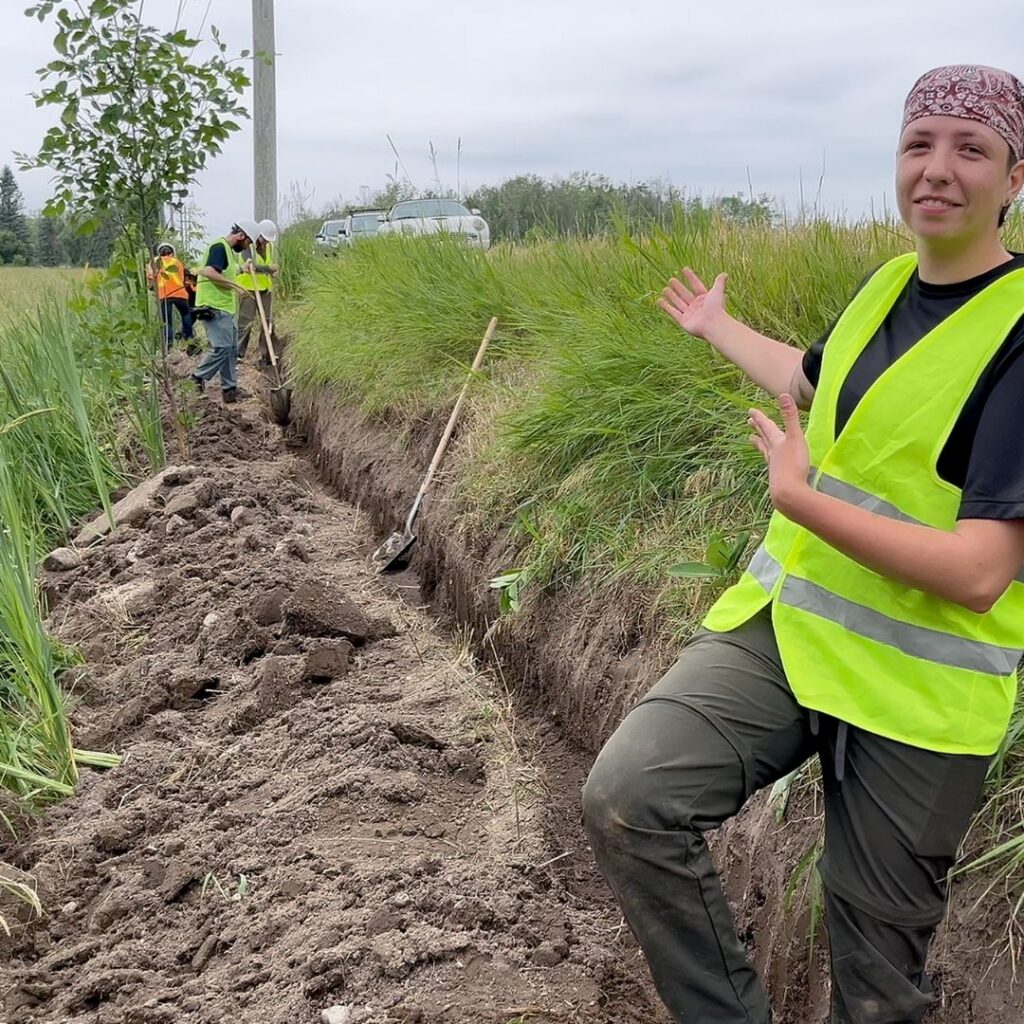
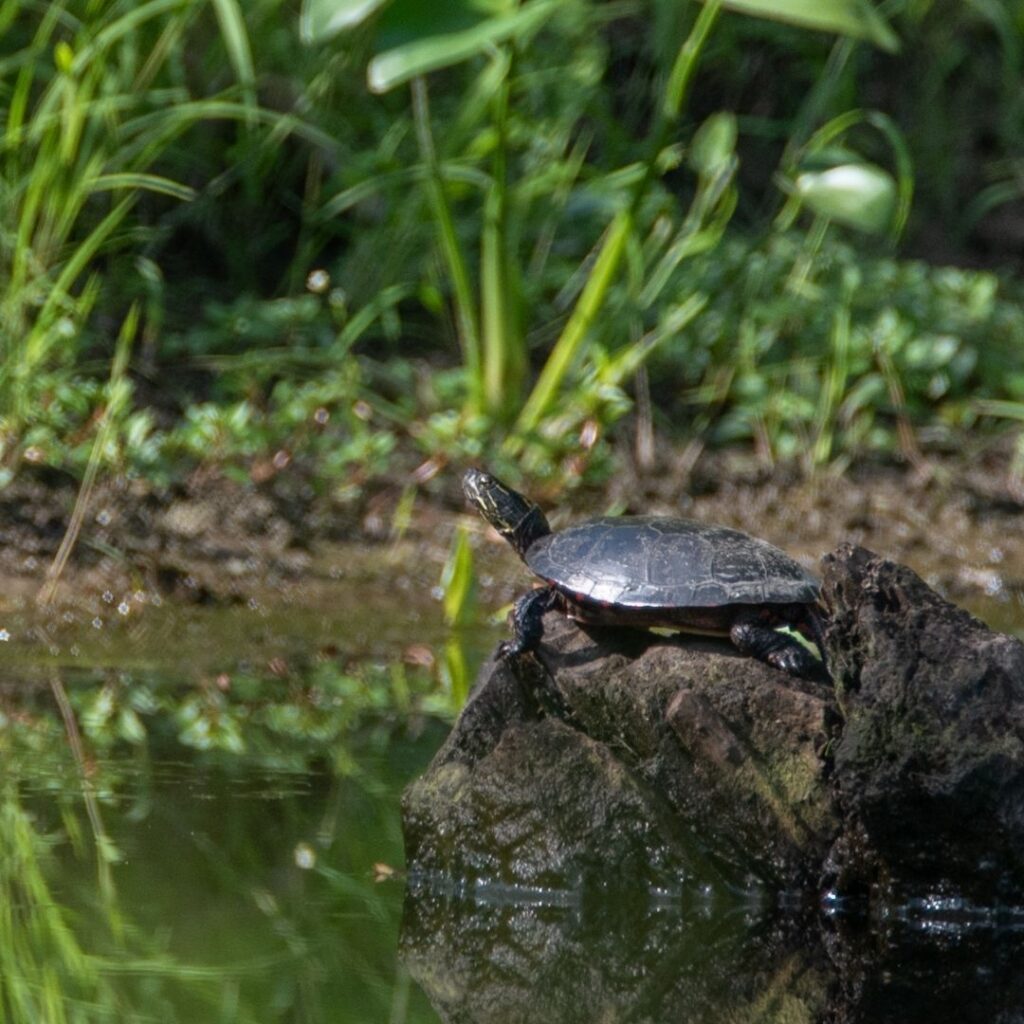
It’s a long stage.
Just as you may have seen in a provincial park, an Eco Passage consists of a fence along the sides of the road that prevents animals from crossing. They’re forced to follow the fence line until it leads to the second part of the passage – a culvert under the road.
Once it’s installed, The Conservancy will be able to gather scientific data to prove the passage prevents animal vehicle collisions. With this information, municipalities may be willing to adapt culverts to be wildlife friendly during upgrades. Many drivers swerve for animals or get out and try to help. This will improve road safety for both wildlife and humans.
Alysha and some tireless volunteers have been hand digging the trench for fence posts. It’s too steep for an excavator. If you see them on Monck Road, they’d love a wave of support. It’s slow going, but these are the first steps to improving road safety for all species.
That morning on Highway 12, I pull over as soon as I safely can to get out and try to corral Mama Duck and family. By the time I reach where she was, she’s no longer in sight. I hope they are safe. I still look for them each day on my drive to work.
This is the 10th in a series of columns by Meg Whitton, nature@couchconservancy.ca, formerly of Bounce Radio, now working in conservation at The Couchiching Conservancy. The Couchiching Conservancy is a non-profit land trust that protects over 15 000 acres of land in the Orillia region.

